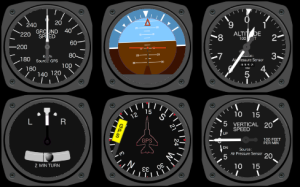 A necessary part of leadership and teamwork is to give feedback to team members and direct reports. In my last article and video I gave an overview of using positive and negative feedback to engage and motivate employees.
A necessary part of leadership and teamwork is to give feedback to team members and direct reports. In my last article and video I gave an overview of using positive and negative feedback to engage and motivate employees.
In this article and video I’ll cover giving negative feedback with the goal of improving performance and productivity. When viewed from this perspective negative feedback can act as a coaching and training activity.
When
 It is important to give negative feedback soon after the need for improvement is perceived. Of course this will vary according to the activity that’s taken place as sometimes you only see the results once the project is completed.
It is important to give negative feedback soon after the need for improvement is perceived. Of course this will vary according to the activity that’s taken place as sometimes you only see the results once the project is completed.
The longer you wait to give negative feedback, the harder it becomes and the worst off for both parties. So don’t procrastinate on this and make it timely.
Where
Give negative feedback in private. Sometimes people can be defensive when getting negative feedback and do not want to appear weak in front of their coworkers.
What
How does the result of the work differ from what you were expecting? This is what you want to focus on as that’s what’s important.
How
 Start by giving positive feedback on what was done well. You want the person to continue using that skill or ability for the positive results.
Start by giving positive feedback on what was done well. You want the person to continue using that skill or ability for the positive results.
Explain what you would have preferred for what needs to change. In this way you are redirecting their focus to the expected result and goal. Approaching the person in this way will have them be more open and less defensive to your feedback. This makes it easier to discuss what they need to do to produce better results. It may also help you determine where they may need additional support in order to achieve what you want.
Commitment
 Through discussion figure out how the person will solve the problem and get a commitment of what they will do different to produce a better result. You can have this put in writing so there is an agreement and paper trail.
Through discussion figure out how the person will solve the problem and get a commitment of what they will do different to produce a better result. You can have this put in writing so there is an agreement and paper trail.
Support
Through your discussion of improvements there might be further training or coaching required or additional resources needed. Make sure you provide that and add that to your written agreement.
Example
 Suppose someone is working on a media presentation for a sales meeting with potential customers. You want certain types of animation of graphic elements in some of the slides and the person did not deliver what you expected. Following my suggestions you would first start by telling the person what you like about what they’ve done. You could say I like the font you chose and the colour scheme of the overall project. It shows you have good judgment to make things aesthetically pleasing and comfortable for the viewer.
Suppose someone is working on a media presentation for a sales meeting with potential customers. You want certain types of animation of graphic elements in some of the slides and the person did not deliver what you expected. Following my suggestions you would first start by telling the person what you like about what they’ve done. You could say I like the font you chose and the colour scheme of the overall project. It shows you have good judgment to make things aesthetically pleasing and comfortable for the viewer.
For the negative feedback portion you could say; I was expecting to have the graphics on slides four and seven animated to go along the text so they don’t appear all at once. We had discussed this so tell me what happened?
By providing the positive feedback first you are balancing both positive and negative feedback and keeping the person open-minded to receive your constructive criticism. As you can see from my example the negative feedback focuses on the expected results and the actual results strives to explore where the problem. This provides a greater platform for open communication and collaboration and keeps the person engaged and motivated.
In the following video I demonstrate how this is done with my associate Sonia.
Summary
- make it timely
- give negative feedback in private
- start with the positives
- focus on the results not the person
- solve the problem and get commitments
In my next article and video I’ll cover giving positive feedback in more depth.
Stephen Goldberg





